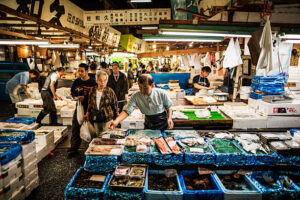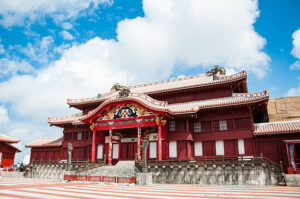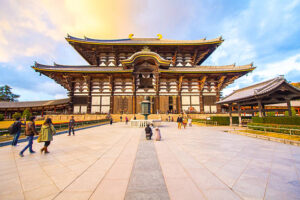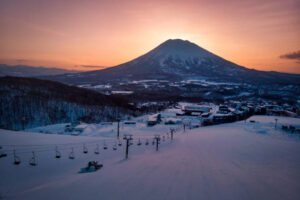Japan Food, Etiquette, and More – A Complete Travel Guide
Japan is a land where ancient traditions blend seamlessly with modern marvels, offering travelers a unique and unforgettable adventure. From the tantalizing flavors of authentic Japanese cuisine to the meticulously observed cultural etiquette, Japan offers an experience that engages all your senses. This Japan Food, Etiquette, and More – A Complete Travel Guide dives deep into every aspect of Japanese culture you should know to enjoy your visit fully.
Japan Food – A Culinary Journey Through Tradition and Innovation
Japanese food is more than just nourishment; it’s an art form deeply rooted in history, culture, and the natural bounty of the land and sea. The concept of Food, Etiquette, and More reflects not only the delicious meals but also the cultural significance behind them.
🍜 Popular Japanese Dishes You Must Try
Sushi and Sashimi
Sushi and sashimi represent the pinnacle of Japanese culinary precision. Fresh fish is the centerpiece, served over carefully prepared vinegared rice (sushi) or simply on its own (sashimi).
-
Must-visit locations:
-
Tsukiji Outer Market (Tokyo)
-
Nishiki Market (Kyoto)
-
Sushi Zanmai chains for budget-friendly sushi options
-
Ramen – A Bowl of Comfort
Ramen offers a perfect combination of broth, noodles, toppings, and seasoning. Regional varieties reflect local tastes:
-
Tonkotsu (Fukuoka): Rich pork bone broth
-
Shoyu (Tokyo): Soy sauce-based
-
Miso (Hokkaido): Fermented soybean base
Pro Tip: Slurping noodles is not rude in Japan; it’s encouraged as a sign of enjoyment.
Tempura – Light and Crispy Delights
Tempura refers to lightly battered and deep-fried seafood and vegetables, served with dipping sauces and grated radish. Enjoy tempura in specialized restaurants or as part of bento sets.

Exploring Japan’s Street Food Scene
Street food is a must-experience aspect of Japan, offering affordable and delicious bites at local markets and festivals.
-
Takoyaki (Osaka): Octopus balls cooked in special pans, typically topped with mayonnaise, green onion, and bonito flakes.
-
Okonomiyaki (Hiroshima/Osaka): Savory pancake with cabbage, meat, and seafood, cooked on a hotplate and served with special sauce.
-
Yatai Stalls (Fukuoka): Mobile stalls that serve ramen, yakitori (grilled chicken skewers), and other local favorites.

Regional Culinary Specialties
Every region in Japan boasts its own culinary identity, providing travelers with endless food exploration opportunities.
-
Hokkaido: Known for rich dairy products, fresh uni (sea urchin), and crabs.
-
Kyoto: Specializes in kaiseki – a traditional multi-course meal focusing on seasonal ingredients.
-
Okinawa: Offers unique dishes such as Okinawa soba, and Goya Champuru (bitter melon stir-fry).
Japan Etiquette – Respecting Time-Honored Traditions
Proper etiquette in Japan is not just about manners; it reflects deep cultural values of respect and harmony. Knowing these customs enhances your travel experience and helps avoid unintentional faux pas.
Essential Do’s
-
Bowing:
A bow expresses respect and gratitude. The depth of the bow varies by situation—from a casual nod to a deep bow of about 45 degrees. -
Taking Off Shoes:
Always remove your shoes when entering homes, temples, shrines, and certain restaurants. Use the provided slippers or walk barefoot. -
Queue Properly:
Japanese people are known for their orderly lines. Follow suit while waiting for trains, buses, or even in front of stores. -
Cash Payments:
Japan remains a largely cash-based society. Carry Yen for convenience, and use IC cards (Suica, Pasmo) for public transport.
Crucial Don’ts
-
Tipping:
Tipping is not practiced in Japan and can be perceived as offensive. Exceptional service is already part of the job. -
Loud Phone Calls in Public:
Keep your phone on silent in public places and avoid talking loudly, especially on public transportation. -
Pointing at People:
Instead of pointing, use a gentle nod or gesture with your whole hand. -
Improper Chopstick Usage:
Never stick chopsticks vertically into a bowl of rice, as it resembles funeral rituals. Avoid passing food directly between chopsticks.
🏯 More – Cultural Landmarks & Experiences
Beyond food and etiquette, Japan’s heritage is reflected in its ancient temples, castles, and cultural arts.
Temples and Shrines
-
Senso-ji Temple (Tokyo): The oldest temple in Tokyo with a bustling Nakamise shopping street.
-
Fushimi Inari Shrine (Kyoto): Iconic for its thousands of vermilion torii gates stretching through wooded trails.
-
Itsukushima Shrine (Miyajima Island): Known for the “floating” torii gate during high tide.

Historical Castles
-
Himeji Castle:
Known as the “White Heron Castle,” this UNESCO World Heritage Site stands out for its pristine white exterior and impressive architecture. -
Matsumoto Castle:
Dubbed the “Crow Castle” due to its black walls, this historic site offers an authentic glimpse into feudal Japan.

Traditional Arts and Experiences
-
Tea Ceremony (Sadō):
Participate in a meticulously choreographed tea ceremony, emphasizing harmony, respect, purity, and tranquility. -
Kabuki Theater:
Dramatic performances combining acting, music, and dance, with extravagant costumes and makeup. -
Ikebana:
The art of flower arranging, focusing on harmony between the arrangement and the environment.
Seasonal Highlights – The Best Time To Visit
Japan’s distinct seasons shape the way travelers experience its culture, landscapes, and food.
🌸 Spring (March–May)
-
Cherry blossoms bloom, making it one of the most picturesque times.
-
Mild temperatures (10°C–20°C).
-
Hanami (flower viewing) parties under sakura trees.
☀️ Summer (June–August)
-
Hot and humid with the rainy season (Tsuyu) in June.
-
Vibrant festivals such as Gion Matsuri and Nebuta Matsuri.
-
Beaches in Okinawa and mountain hikes.
🍁 Autumn (September–November)
-
Stunning autumn foliage (Koyo) in Kyoto, Nara, and Nikko.
-
Pleasant weather (15°C–25°C).
❄️ Winter (December–February)
-
Cold temperatures (-5°C to 10°C).
-
Sapporo Snow Festival and Onsen hot springs provide seasonal charm.

Practical Travel Tips – Make Your Journey Smoother
1. Transportation
-
Japan Rail Pass: Ideal for long-distance travel on JR trains.
-
IC Cards (Suica/Pasmo): Convenient for urban travel.
-
Buses and Metro: Efficient in urban and rural areas.
2. Accommodation
-
Ryokan: Traditional inns with tatami floors and kaiseki meals.
-
Hotels and Hostels: Range from luxury to budget-friendly.
-
Capsule Hotels: Compact and cost-effective.
Language Tips
-
Learn basic phrases like “Arigatou” (Thank you) and “Sumimasen” (Excuse me).
-
Translation apps such as Google Translate and Waygo can assist with menus.
Sample 7-Day Itinerary – Food, Etiquette, and More
Day 1 – Tokyo
-
Visit Senso-ji Temple and sample sushi at Tsukiji Market.
Day 2 – Kyoto
-
Participate in a tea ceremony and explore Nishiki Market.
Day 3 – Osaka
-
Street food exploration in Dotonbori and visit Kuromon Ichiba Market.
Day 4 – Hiroshima
-
Visit the Peace Memorial Park and enjoy Hiroshima-style okonomiyaki.
Day 5 – Hakone
-
Experience an onsen and visit scenic Lake Ashi.
Day 6 – Hokkaido
-
Explore the Sapporo Snow Festival or fresh seafood delights.
Day 7 – Okinawa
-
Enjoy tropical beaches and local Okinawan cuisine.
Conclusion – Master the Art of Japan Travel
This Japan Food, Etiquette, and More – A Complete Travel Guide provides the essential knowledge needed to fully appreciate Japan’s food, culture, and customs. From savoring authentic sushi to participating in tea ceremonies and understanding local etiquette, this guide ensures a respectful, delicious, and culturally enriching travel experience.
Whether you’re a first-time visitor or a seasoned traveler, embracing the customs and culinary delights will make your Japan adventure truly unforgettable.